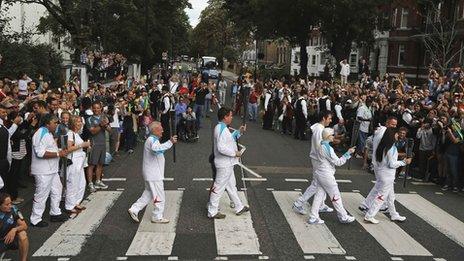England's most unusual listed buildings
- Published
This week English Heritage announced east London's Rom skatepark, external was to become the first building of its kind to be listed.
From the sensible to the sublime, BBC News takes a look at other weird and wonderful examples of listed buildings across England.
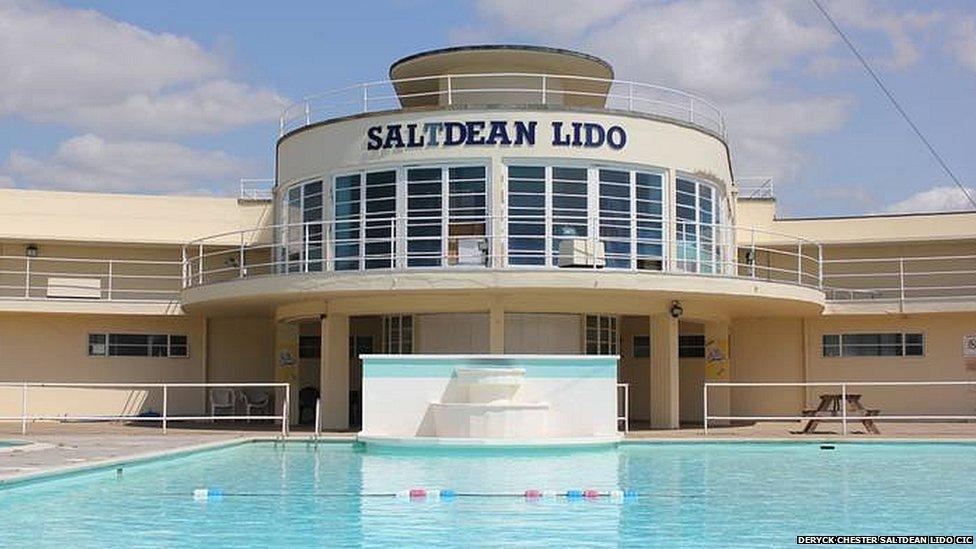
Brighton's Saltdean Lido
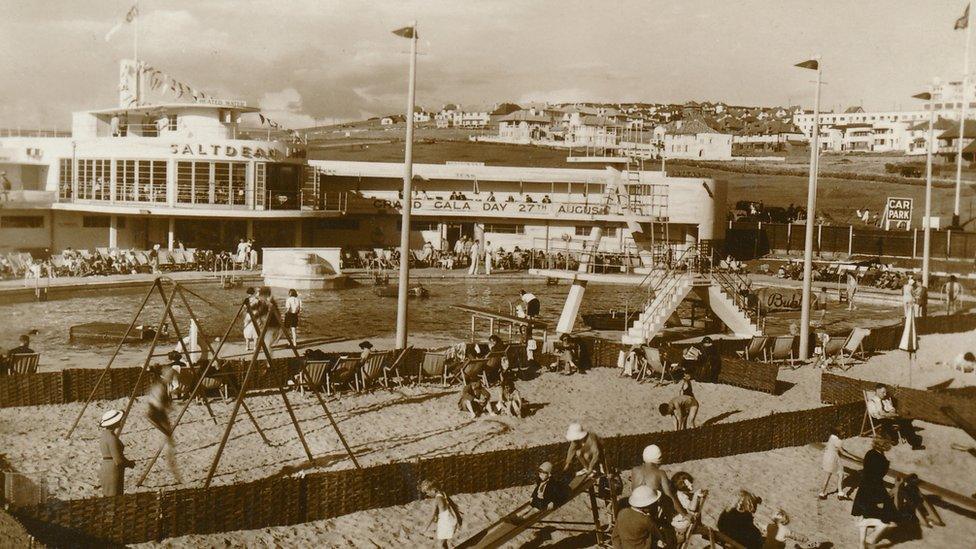
Saltdean Lido in the 1930s
Brighton's Saltdean Lido was granted Grade II listed protection in 1987.
Designed by the architect Richard Jones, it was built in 1937 in the Art Deco style and was popular with tourists for generations.
After its leaseholder revealed plans to build flats on the site, a campaign began to save it and its status was subsequently upgraded to Grade II*, external - reserved for buildings of more than special interest - in 2011.
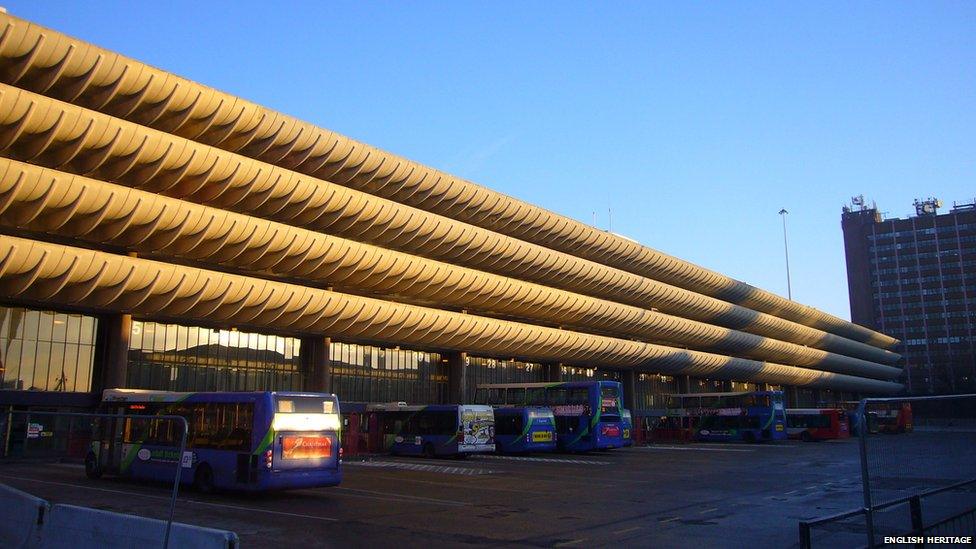
Preston Bus Station
Granted Grade II listing in 2013, Preston Bus Station has been previously described as one of the world's "most treasured locations" by the World Monuments Fund.
However, it has divided opinion since its inception - being labelled "an eyesore" by the city council's former leader, Ken Hudson.
The station was built between 1968 and 1969 and was protected from demolition by English Heritage in 2013. Proposals for a £23m redevelopment, external, which would include a youth centre, have been unveiled. A planning application will be considered by April 2015.
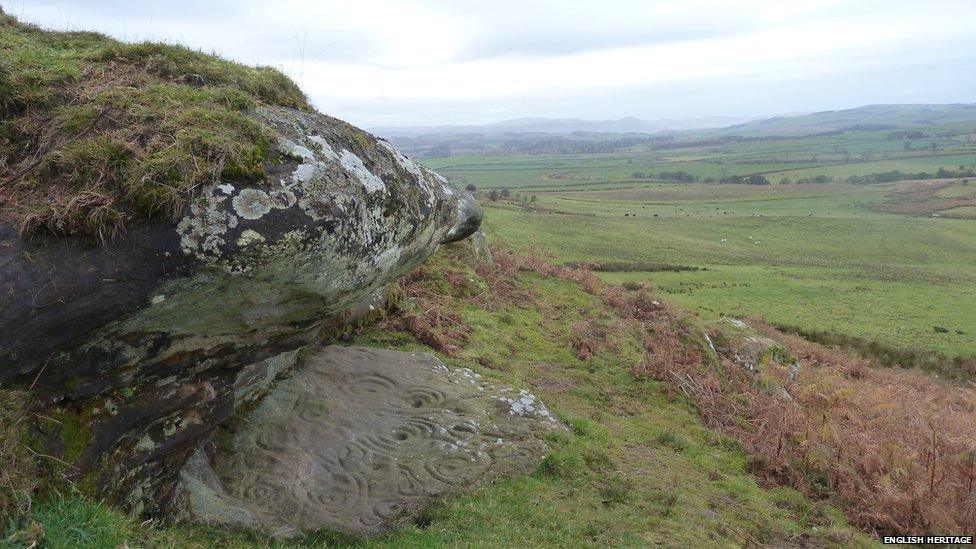
Ketley Crag Rock Shelter near Chatton, Northumberland
Created in the Neolithic and early Bronze Age, between 3800 BC and 1500 BC, the rock art found across various locations in the North East is older than Egypt's pyramids.
Granted protected status in April, external, they have kept archaeologists guessing for centuries about what their true meaning may be.
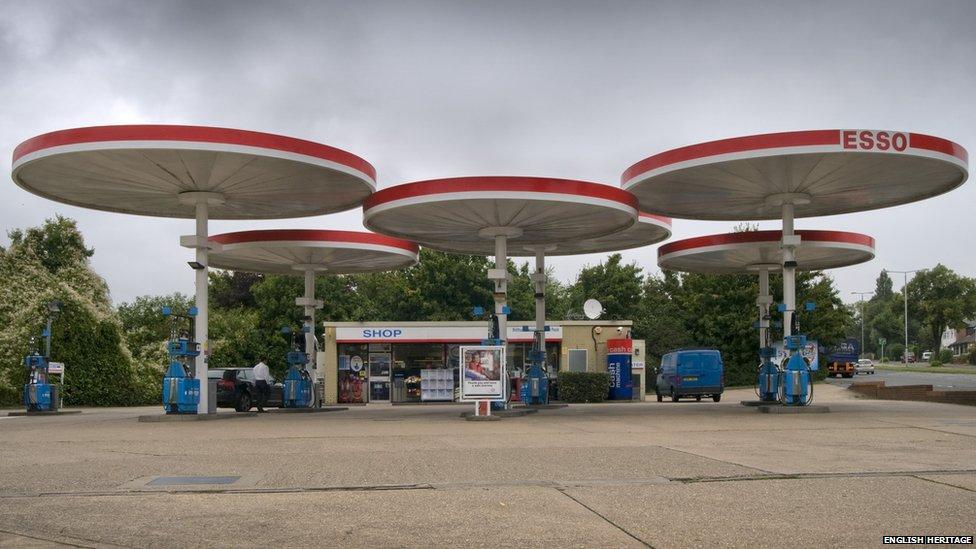
The Mobil petrol station canopies at Red Hill, Leicestershire
A short hop off the A6 at Red Hill, in Leicestershire, can be found another listed building - a futuristic Esso petrol station.
The circular Mobil canopies were designed by the American modernist architect, Elliot Noyes in the late 1960s.
English Heritage chief executive Simon Thurley said the petrol station symbolised to future generations "some of the flair and exuberance associated with driving in the 1960s".
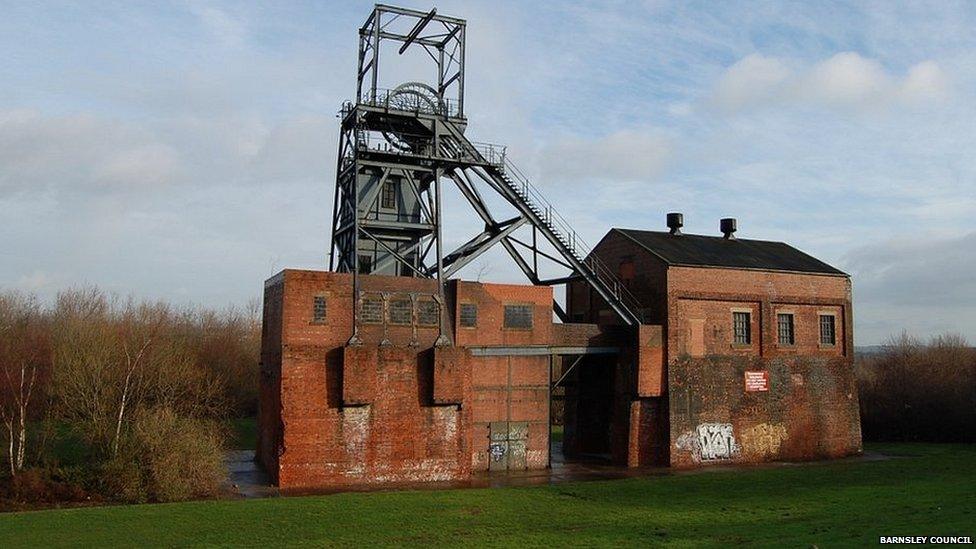
Barnsley Main Colliery buildings
Barnsley Main colliery in South Yorkshire was the site of a mining disaster that left more than 360 people dead in 1866. It became Grade II listed in 2013, external because of its historic significance.
Brian Elliot, author and mining historian, said at the time: "After the miners' strike many sites were completely obliterated from the landscape. To have one part survive is important for future generations and marvellous news."
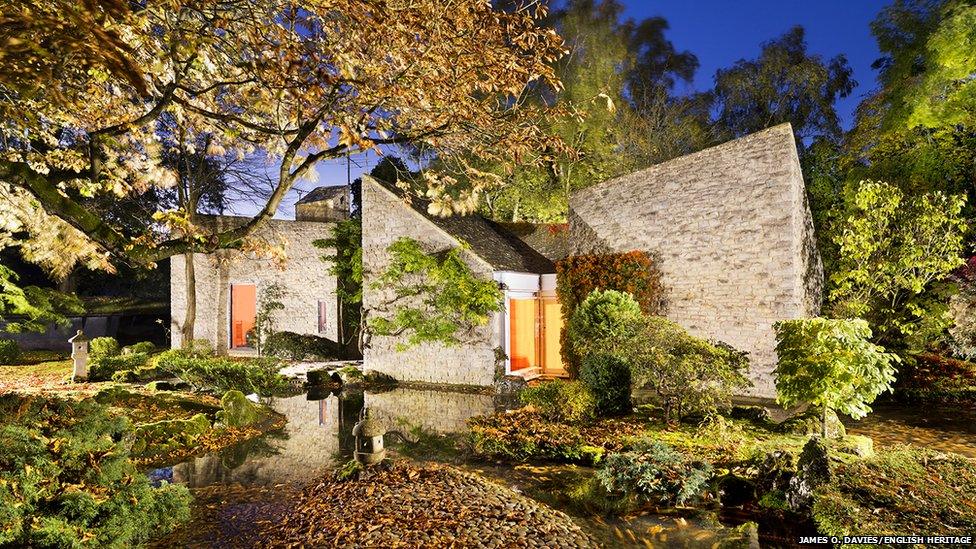
New House in Shipton-under-Wychwood, Oxfordshire
New House, in Shipton-under-Wychwood, Oxfordshire, was given Grade II listing in 1998. The house was upgraded in 2012 to Grade II* status when the garden was added to the listing.
English Heritage describes it as an innovative example of early 1960s domestic architecture "in a modernist idiom".

Boundary Marker at the junction of Thicket Road and High Street, in Staple Hill, Bristol
This Grade II listed boundary marker in Staple Hill, Bristol, was erected to show the border between the city and the county of Gloucestershire.
Abbey Road Studios - where The Beatles famously made many of their records - was given Grade II listing in 2010, external after public outcry over plans to put the building up for sale.
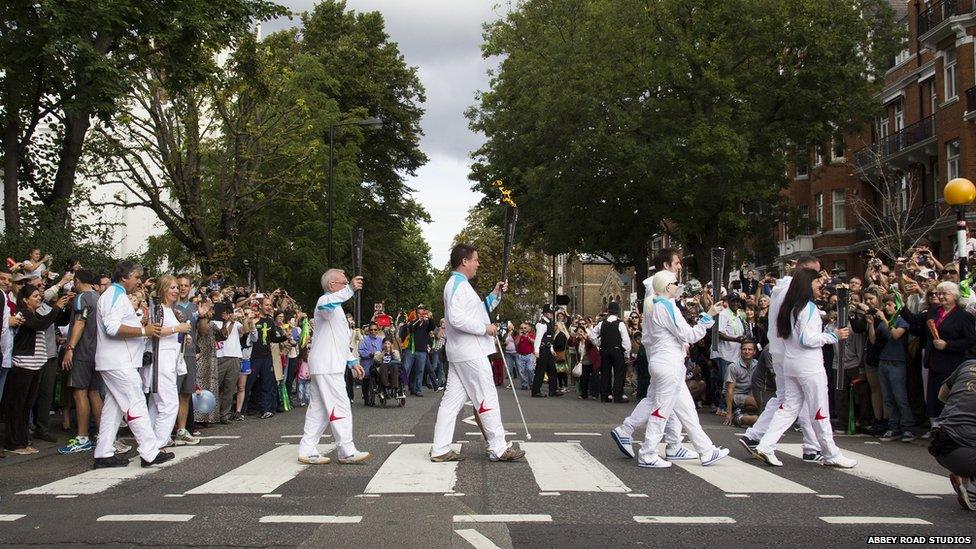
Paralympic torch on the Abbey Road zebra crossing in 2012
Margaret Hodge, the culture minister at the time, accepted a recommendation by English Heritage for listed status, after the buildings were put up for sale by the record company EMI amid spiralling debts.
Along with the studios, the Abbey Road zebra crossing in north London - made famous by appearing on the cover of the Beatles' album Abbey Road - was given Grade II listed status in 2010, external.
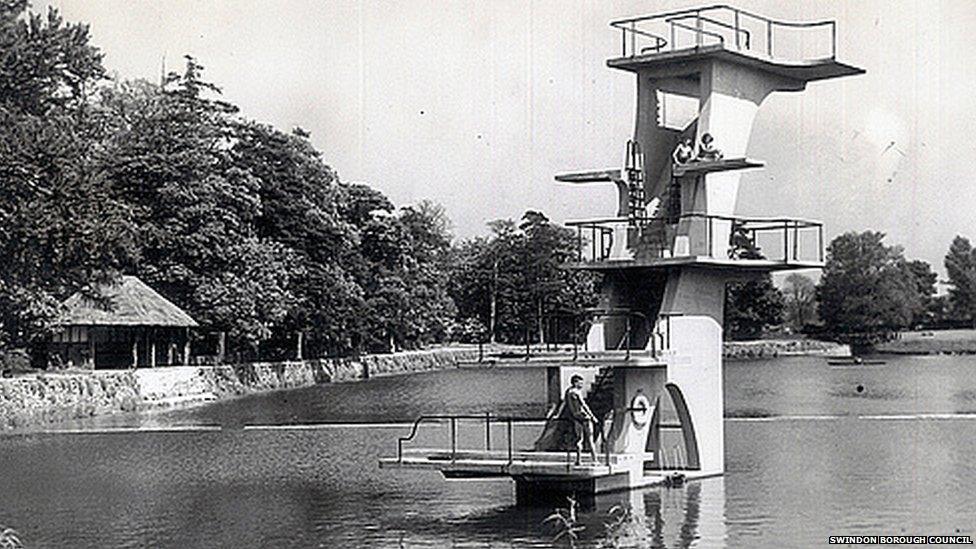
Open-air diving platform at Coate Water, Swindon
An open-air diving platform at Coate Water in Swindon was given a Grade II listing in November 2013, external.
The 10m (33ft) high stage was designed by local architect JBL Thompson and opened in 1935.
The Art Deco style structure is "one of only four inter-war concrete diving platforms" to have survived in England, according to English Heritage.
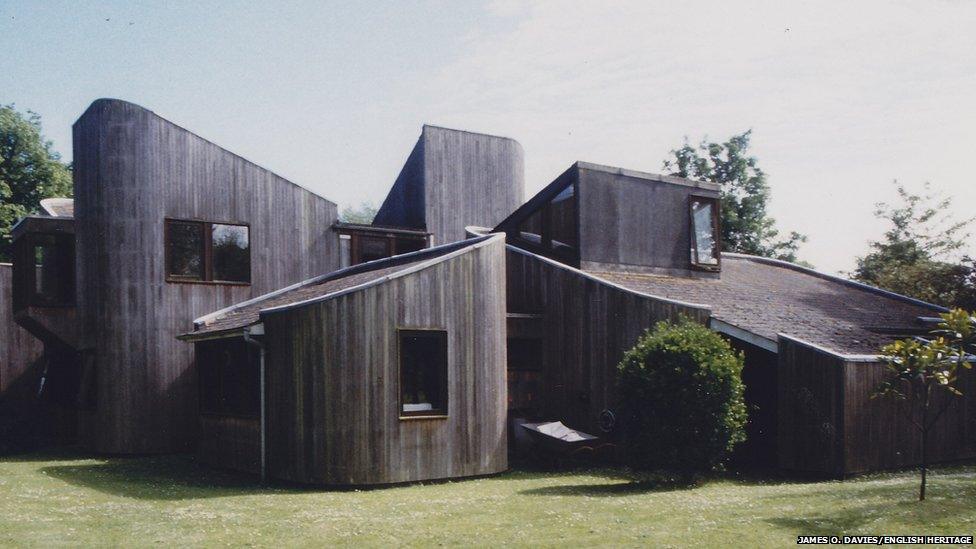
Severels, Runcton, Chichester, West Sussex
This house was built by the architect Walter Greaves in 1981 as a home for himself and his wife Annabel.
The house in Runcton, Chichester, West Sussex, was given a Grade II* listing due to its "exceptional quality and real special interest".
- Published29 October 2014

- Published28 October 2014
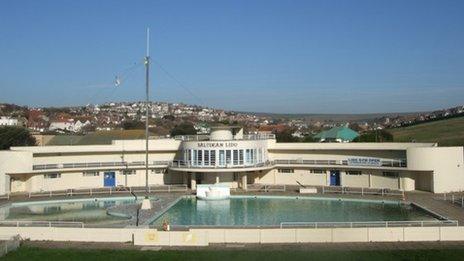
- Published5 October 2011
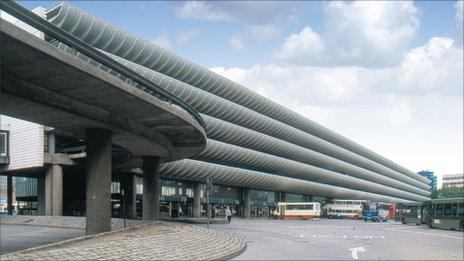
- Published10 April 2014
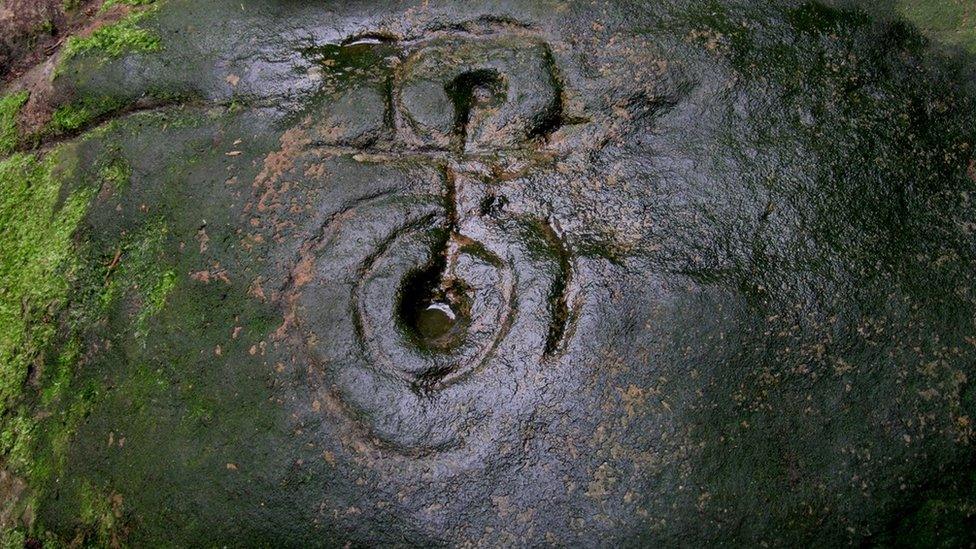
- Published20 June 2013
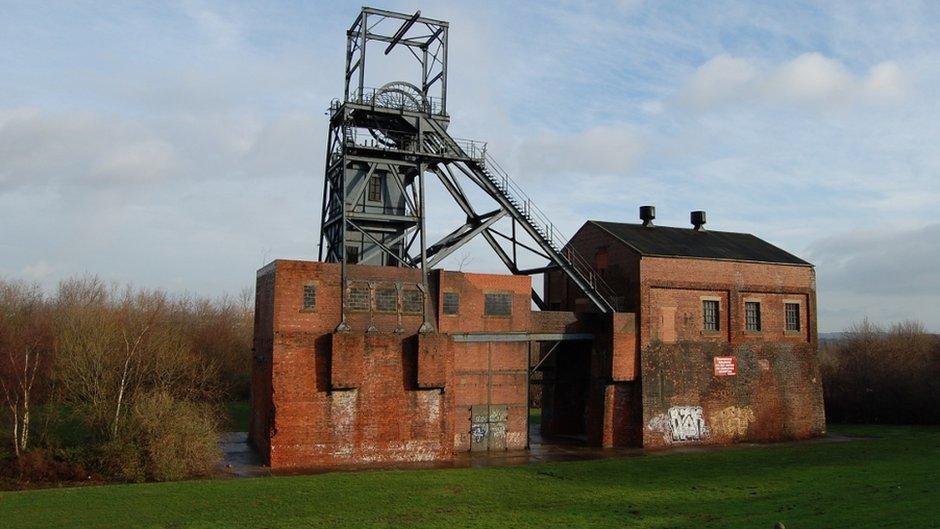
- Published29 November 2013
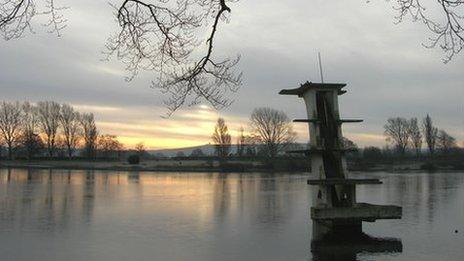
- Published22 December 2010
- Published29 August 2012
